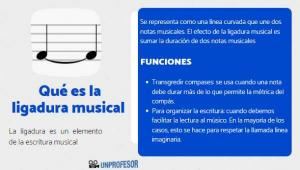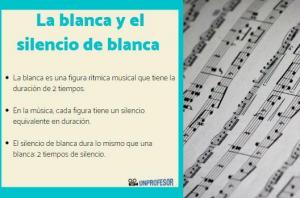The two CORCHES united

Music relies on creativity to create wonderful works and is one of the most important elements in continuing to evolve art. However, there is a necessary element to be able to share it and make it transcend, a way that requires the ability to adapt having various options to be able to reflect all the ideas we create: writing musical.
In this lesson from a TEACHER we will learn about two joined eighth notes, one of the musical writing tools to organize musical ideas.
The main objective of musical writing is to take an element as abstract as sound and transmit it in the most faithful way possible to our ideas. A very important point of musical writing is organization, to allow easy reading and therefore artistic interpretation.
It is likely that you have already come across this figure sometime, when two notes are joined despite being different sounds. Precisely the linked eighth notes are two individual eighth notes, which have been joined by a bar, the part of the note at the which we call the bracket joins both notes (we will clarify more about the anatomy of musical notes later in this Article).
This option to draw them like this allows us to organize the eighth notes in groups, to make it easier for the musician to read, since it turns out to be much more visual and structured than if they were all separated.
The eighth notes are not the only rhythmic figure that can be joined by the bracket, other figures of shorter duration than the quarter note usually present this option, such as the semi-eighth notes, fusas, semi-fusas, triplets and sextillos among others.
Since when joining the symbol of the musical figure changes, to recognize them we must look at the number of bars that join the notes. The eighth notes are joined by a bar, the semi-eighth notes by 2 and so on by hierarchy of long to short notes. It is the same case for ternary figures (based on number 3) such as triplets and sextiles, the triplets being the first to be directly linked by the bracket.
From this point on we will write some sections that will help you clarify some concepts or doubts you may have. If at this point you still have doubts, we recommend that you take a look at the rest of this article.
The rhythmic figures in music they are the different symbols for the notes and the silences that indicate their duration. Notes are in pitch, while rests indicate a pause. For each musical figure of a note there is a silence of equivalent duration. In the case of notesThese have parts with specific names to be able to refer to them, we call this anatomy of musical figures.
Anatomy of musical figures
Notes can be made up of 3 parts: head, stem and bracket. Not all shapes have each part, depending on whether they have that or not and their shapes, this is how we recognize a shape.
For example, in the case of the round one we only have the head, while in the white one we already obtain the escrow but we still do not have a bracket. The bracket begins to appear with shorter figures, starting with the eighth note. In the case of silences, it is necessary to memorize and remember the symbols, since they do not have the same anatomy as the notes.
This is a list of the duration of some of the musical figures, which we measure with “time”. Remember that the ones that are better at the eighth note are the ones that can be joined by the bracket.
Notes duration
- Round= 4 times
- White= 2 times
- Black= 1 time
- Quaver = 1/2 time
- Triplet= 1/3 time
- Semiquaver = 1/4 time
- Sextuplet = 1/6 of time
- Fusa = 1/8 of time
- Semi-Fusa= 1/16 of the time
Remember that these are just some of the musical figures that exist. Parallel to the figures there are also elements of musical writing that help us to alter the duration of a figure, such as the dot and the ligatures.
Now that you know the two linked eighth notes, you are closer to being able to read and write music! We recommend that you take a moment to look at sheet music to try to find eighth notes or smaller figures attached, so that you can better understand how they are used.
If you have enjoyed reading this article by a PROFESSOR, we invite you to leave a comment telling us about your experience and for you to visit the rest of the articles we have for you to follow learning.



